M’sian chain ZUS Coffee finally lands in Singapore, opens first store in Changi Airport
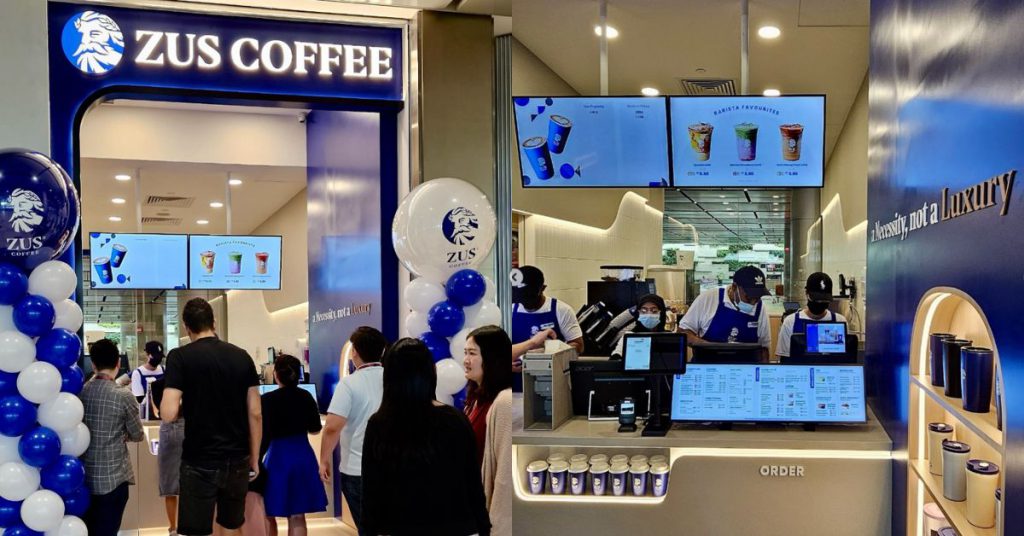
Malaysian coffee lovers will know the name ZUS Coffee—this fast-growing brand has been serving caffeinated delights since 2019.
While ZUS has taken Malaysia by storm with over 580 outlets, it just made another big step abroad by opening its first Singaporean store.
The journey so far
For a brand that only started five years ago in Kuala Lumpur, ZUS Coffee’s rapid expansion is impressive.
With 586 stores in Malaysia, 59 in the Philippines, and now its latest venture in Singapore, ZUS is growing fast with over 600 outlets in three countries. This move marks its second international expansion following the Philippines.
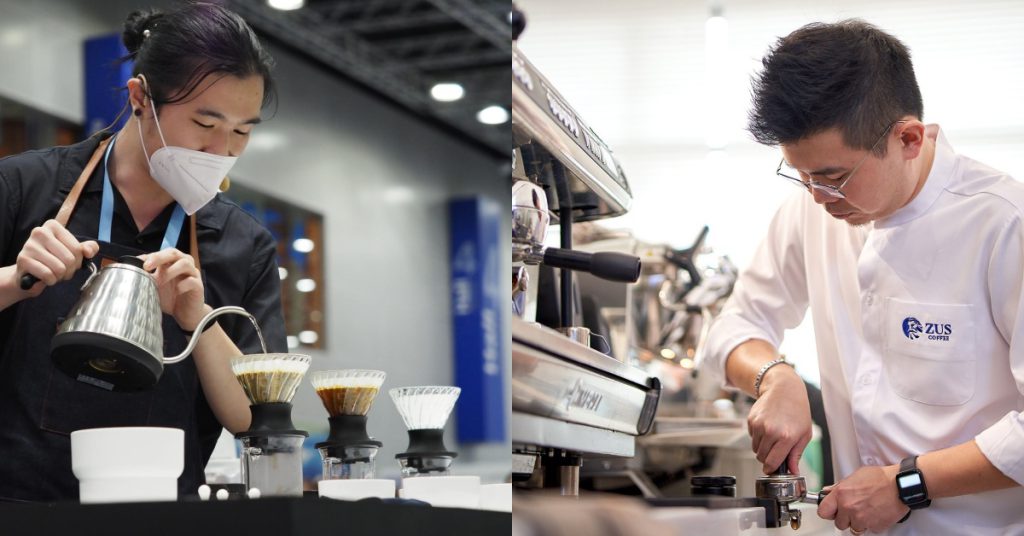
Singapore is the latest market in their sights, and they’re making their debut in one of the busiest spots on the island—Changi Airport, Terminal 4, with a cosy grab-and-go kiosk that officially opened on October 11.
It positions them as an ideal pit stop for travellers, whether arriving, departing, or just passing through the terminal.
A peek at the Singapore menu
We’re not entirely sure what they are offering in Singapore, but from the pictures of the outlet launch that ZUS Coffee has shared online, we’ve caught a glimpse of some drinks.
The drinks include Matcha Strawberry Latte for S$5.90, Spanish Latte, and Dark Oolong Cham Latte, both priced at S$5.50.

If their Malaysian menu is anything to go by, Singaporeans can look forward to an extensive selection of beverages, from bold espressos to unique flavour combinations like coconut and butterscotch.
Given ZUS’s knack for innovation, we’re curious to see if they’ll tweak the menu to better suit Singaporean tastes or keep it consistent with what they’re known for back home.
The challenge ahead in Singapore’s coffee scene
ZUS Coffee isn’t entering an empty market. Established coffee brands like Starbucks and The Coffee Bean & Tea Leaf have already firmly planted themselves in Changi Airport’s fourth terminal.
And let’s not forget the growing number of regional and international players who have been staking their claim in Singapore over the past year. From Indonesia’s Kopi Kenangan to Taiwan’s Louisa Coffee, South Korea’s Compose Coffee, and China’s Greybox Coffee, the competition is intense.
This influx of coffee brands is no surprise. With Singapore’s high coffee consumption rates, attractive tax regimes, and rising disposable incomes, it’s a prime location for Southeast Asian coffee chains looking to expand their footprint.
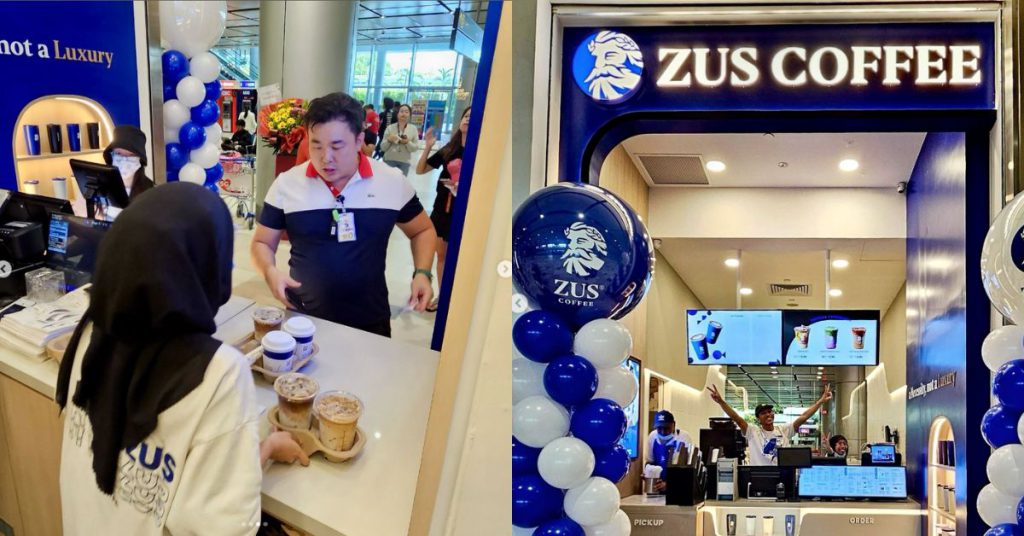
According to World Coffee Portal’s Project Cafe East Asia 2024 report, the Singaporean branded coffee shop market is forecast to hit 1,250 outlets by 2029. That’s a lot of coffee for such a small country, and ZUS Coffee is looking to make its mark among the big players.
What’s next for ZUS Coffee?
With their first Singaporean kiosk officially open, ZUS Coffee’s next move will be interesting to watch.
The company recently raised around US$57.27 million, which they plan to use for further domestic and international expansion, with Singapore and Brunei being high on their list for growth in 2024.
This new injection of funding will no doubt give them the boost they need to hold their own in Singapore’s thriving coffee scene.
But as more and more coffee chains flood Singapore, only time will tell if ZUS Coffee can truly carve out a loyal following in this competitive market. With their proven track record in Malaysia, we wouldn’t be surprised to see them flourish in Singapore as well.
But they’re up against some big names, and it’ll be fascinating to see how they adapt and compete. For now, all we can do is wait for that first cup and see how the Singaporeans take to this Malaysian favourite.
Also Read: SDEC 2024 will explore the latest trends in semicon, AI & ecommerce, here’s how to join
Featured Image Credit: ZUS Coffee
“We have achieved what we wanted to”: SS2 Italian restaurant Gooddam shuts down after 6 years

After six years, Italian restaurant Gooddam is calling it a day. Located in The Hub SS2, the restaurant will be closing its doors for the last time on November 11.
“As we turn the page to a new chapter, it is with mixed emotions that we announce the closure of Gooddam Restaurant,” they posted to Instagram back in August.
In their last few months, the restaurant has been serving their last menu, aptly titled Menu Finale.
Known for serving up modern Italian cuisine with a local produce-driven focus, the semi-fine dining restaurant is owned by chef-patron Daniel Yap and Miki Lie.
The duo first met during their culinary diploma at KDU University College, according to Tatler. They were a good fit, as Daniel’s passion leaned towards cooking and presenting, while Miki’s forte was in management and organisation.
In 2014, which was the final year of Daniel’s studies, the chef transferred to ALMA’s Culinary Program in Italy for a year. He went on to work in the two Michelin-starred Piccolo Lago in Piemonte, where he picked up various Italian cooking methods, ingredients, and food culture.
His time in Italy, along with other experiences he collected along his culinary journey, inspired the establishment of Gooddam and its menu.

In a video with Set The Tables, Daniel shared that he felt like the timing was right to close Gooddam, as they have achieved what they set out to do.
“The reason why we’re closing is also because of tenancy issues, which forced us to take this decision,” Miki admitted in the video.
She continued, “At the same time, I feel that we need time and space to also restructure and rethink what we need to do next.”
So, what is next?
First of all, a well-deserved vacation.
Both Miki and Daniel shared in the Set The Tables video that they are looking forward to having some R&R.
The dynamic duo has certainly worked hard over the past six years. They even opened a pasta brand together in 2022 by the name of Moodmood, but it shut down last November.
In the caption of Set The Table’s video, it’s reported that Miki and Daniel will be parting ways to “pursue their interests in F&B, from refreshingly different angles”.
For those who hope to try Gooddam in its SS2 home one last time—or perhaps even for the first time—there’s time left still.
Gooddam will also be doing a pop-up at Locus, a 16-seater restaurant in Damansara Jaya, after their closure, though details have not been confirmed.
Despite Gooddam’s closure, we’re sure that there’s more to come for Miki and Daniel. We look forward to seeing what’s next for the both of them.
Also Read: SDEC 2024 will explore the latest trends in semicon, AI & ecommerce, here’s how to join
Featured Image Credit: Gooddam
This M’sian couple’s frozen meals biz has raised US$1.5mil from investors like 500 Global
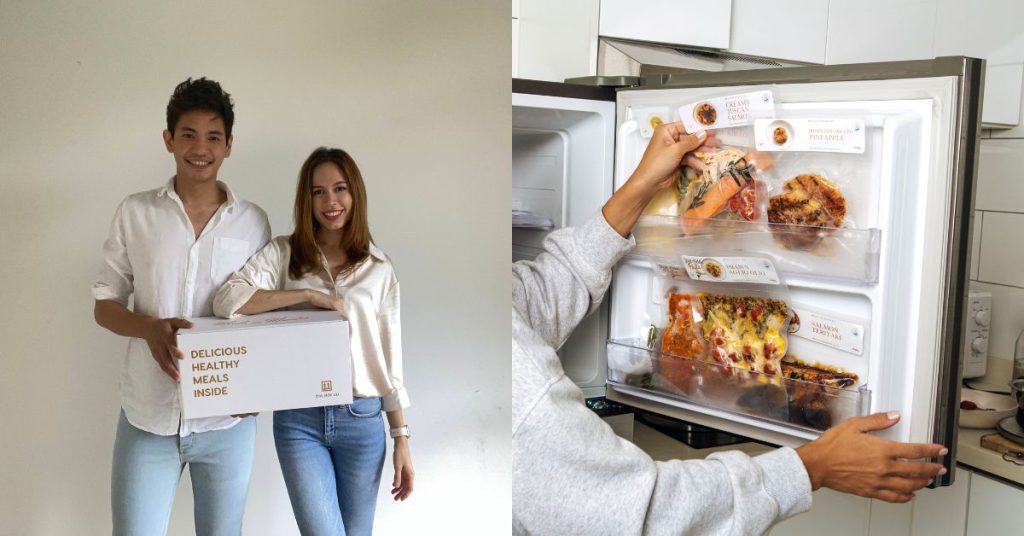
It’s not every day that a frozen meal startup in Malaysia secures US$1.5 million in funding, especially from notable backers like 500 Global.
Yet, Meals in Minutes has managed to achieve that, signalling a shift in consumer preferences. More Malaysians—and people worldwide—are seeking a balance between nutrition and convenience, and frozen ready-to-eat meals are perfectly poised to fill that gap.
Founded by Brandon Lim and Khiara Mia in early 2020, Meals in Minutes’ product line of blast-frozen, vacuum-packed meals gives consumers the flexibility to enjoy quality, home-cooked meals at their convenience.
A gap in the market sparks innovation
The idea for Meals in Minutes was born out of Brandon’s experience leading his family’s food manufacturing business, Seiko Gourmet. As someone deeply involved in the food service industry, Brandon noticed significant gaps in the market.

Busy consumers lacked healthy, convenient meal options, often resorting to unhealthy fast food or frozen meals laden with preservatives. He saw an opportunity to provide a better alternative.
Brandon and Khiara had already partnered to launch a venture importing Malaysian food into the UK, so they were no strangers to the intricacies of the food business.
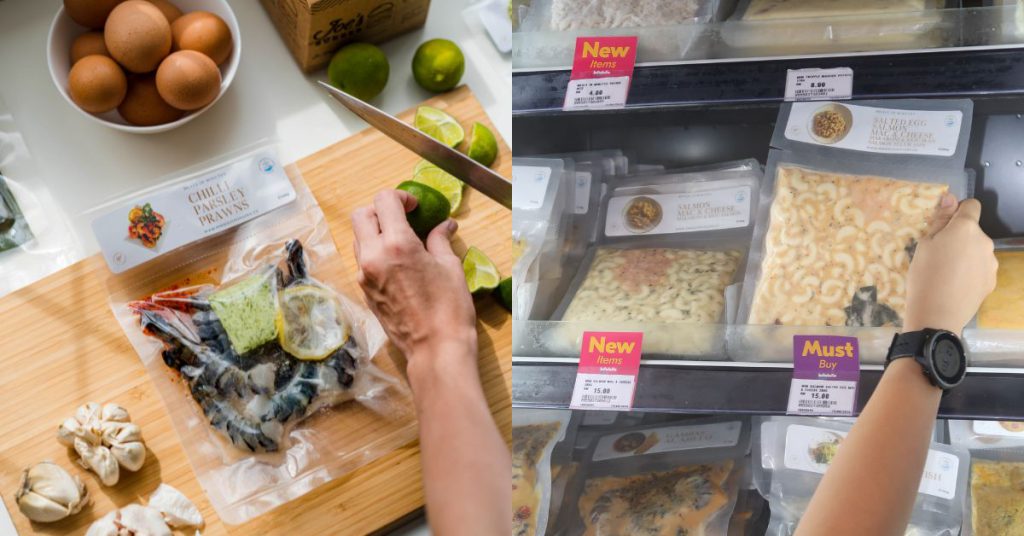
Drawing on these experiences, they saw a potential solution to a growing problem: a meal kit that would deliver convenience, nutrition, and taste all in one.
“Our goal was to revolutionise the way people think about quick meals, proving that fast doesn’t have to mean unhealthy,” they told Vulcan Post.
They embarked on two years of research and development to bring their vision to life, ultimately creating the Meals in Minutes product line.

“As a result, we decided to launch Meals in Minutes as a direct-to-consumer brand and then expand into our business-to-business offerings,” they added.
The frozen meal kit industry
Meals in Minutes is part of a larger movement that is transforming the food industry.
As such, one of their unique selling points is their commitment to natural ingredients and the absence of preservatives. While some frozen meals on the market may rely on additives to extend shelf life, Meals in Minutes keeps it simple.
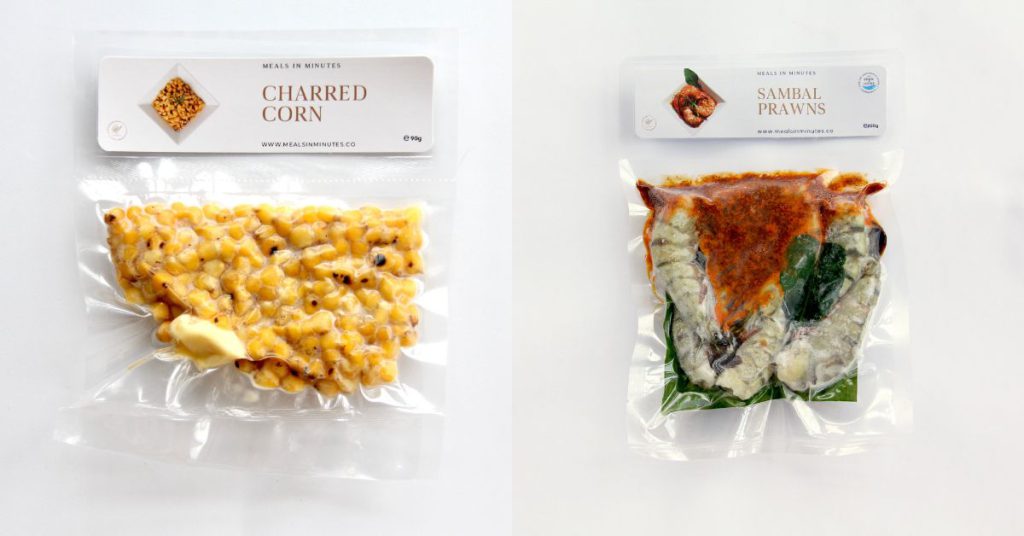
Their products are vacuum-packed at peak freshness and blast-frozen, preserving both flavour and nutrition. With a freezer shelf life of over a year, customers can stock up and enjoy these meals at their convenience without worrying about consuming them immediately.
Not only that, customers can also mix and match proteins, bases, and sides to create their own customised meals.
Cooking methods are equally varied, with options ranging from sous-vide boiling, microwave heating, pan-frying, and even chef-mode cooking for those who want to add their personal touch. The variety of cooking styles ensures that Meals in Minutes appeals to everyone—from kitchen novices to aspiring home chefs.

The COVID-19 pandemic played a significant role in accelerating the growth of Meals in Minutes. As people became more conscious of food safety and hygiene, the brand’s HACCP, halal, and ISO certifications became major selling points, they said.
Additionally, lockdowns and social distancing measures led to a surge in demand for home-delivered food solutions. With grocery store visits becoming less frequent and the demand for safe, convenient meals rising, Meals in Minutes found itself perfectly positioned to meet these needs.
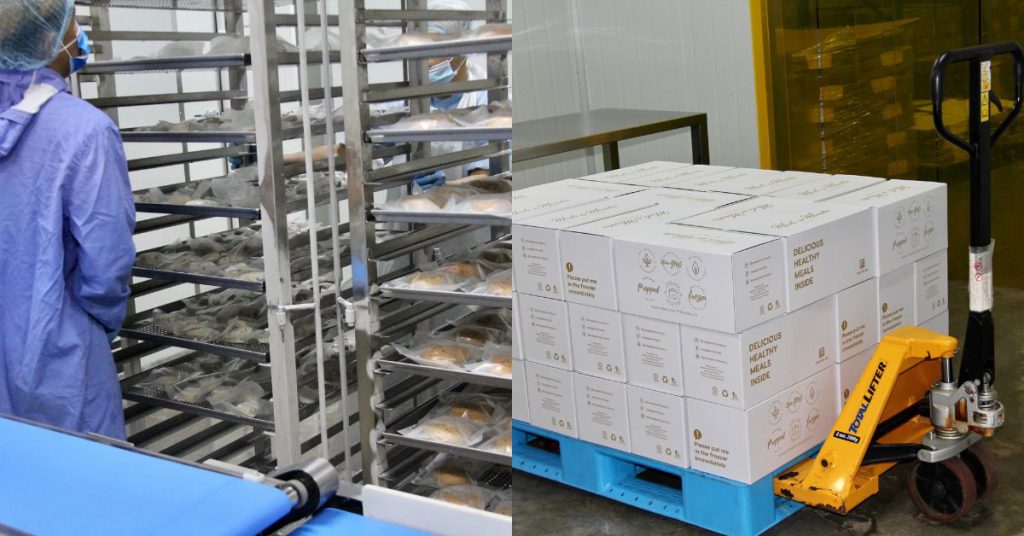
This scenario mirrors the rise of other similar businesses mentioned above, which have also capitalised on the growing consumer appetite for ready-made, healthy meal options.
Overcoming the challenges of scaling up
Building Meals in Minutes into a thriving business was no easy task. From navigating the complexities of food safety regulations to scaling production, Brandon and Khiara faced numerous challenges.

Obtaining certifications like HACCP and ISO required meticulous attention to detail, with every production line, supplier, and ingredient needing to pass rigorous audits.
“Developing a product that could meet all three criteria while being easy to prepare required countless iterations and frequent returns to the drawing board,” they said, referring to taste, convenience, and nutrition as the criteria.
Financially, the business faced hurdles early on. Funding research and development while maintaining operational costs was a delicate balancing act.
Brandon and Khiara explored various financing avenues, including investor support and strategic partnerships.
These relationships not only provided the necessary financial backing but also helped expand their distribution network across Malaysia and Singapore, where similar businesses such as YoloFoods are present too, pointing to a demand for convenient, ready-to-cook meals.
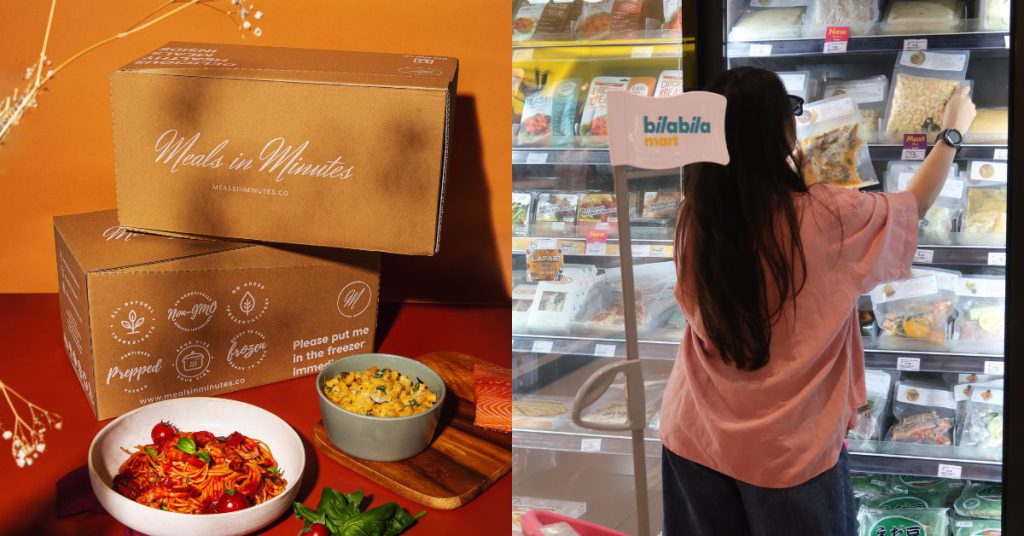
Partnerships with premium grocers like Jaya Grocer and Village Grocer have also played a key role in their growth, allowing the brand to reach a wider audience.
Expanding to new markets
It’s not just the innovative approach or the convenience that has set Meals in Minutes apart—it’s the growing recognition that they are filling a critical gap in the market. The funding from 500 Global and a private investor is a testament to the belief that this startup is onto something big.
“Attracting the attention of 500 Global was a combination of having a clear vision, a strong product, and demonstrating market potential.”
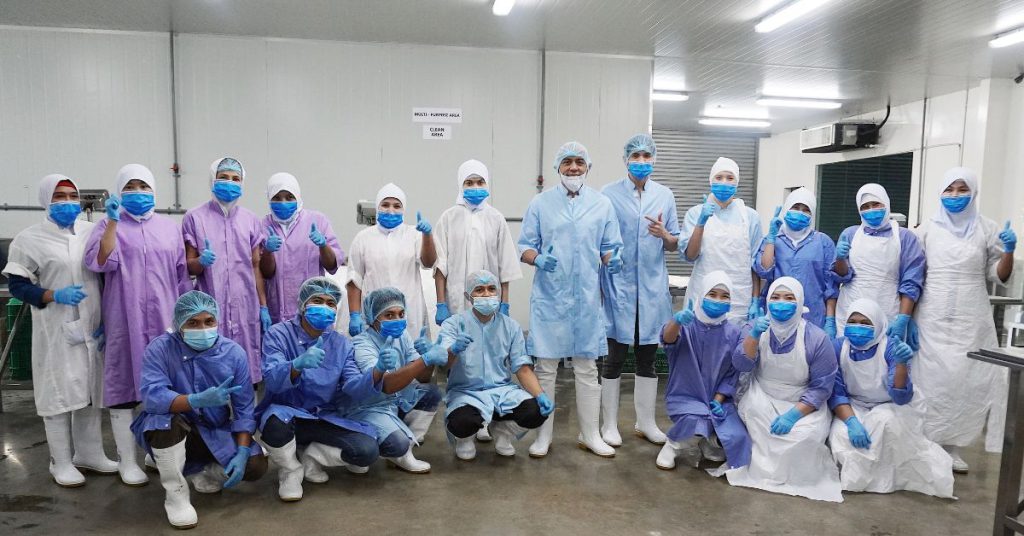
“With this investment, our primary goal is to expand into the UK market while also widening our reach in the Malaysian and Singaporean markets.”
“We see this as an opportunity to solidify our presence in these regions, invest in marketing, improve our production capabilities, and ultimately, introduce Meals in Minutes to a larger international audience,” they shared.
With the UK a top priority for them, Europe and the United States are also on their radar, with increasing consumer interest in healthy, convenient meal options.
At home, Meals in Minutes plans to continue innovating its product line to cater to local tastes.
“By incorporating beloved local flavours such as rendang, nasi lemak, and other traditional dishes, we aim to provide comfort and familiarity in our meal options while maintaining the convenience and quality that Meals in Minutes is known for,” said the founders.
- You can learn more about Meals in Minutes here.
- Read other articles we’ve written about Malaysian startups here.
Also Read: 5 scenarios in which you would appreciate having the reliable ASUS Vivobook 16 for work
Featured Image Credit: Meals in Minutes
Just 2 weeks with the ASUS ROG Ally X changed how I game forever, but is it worth RM4,299?
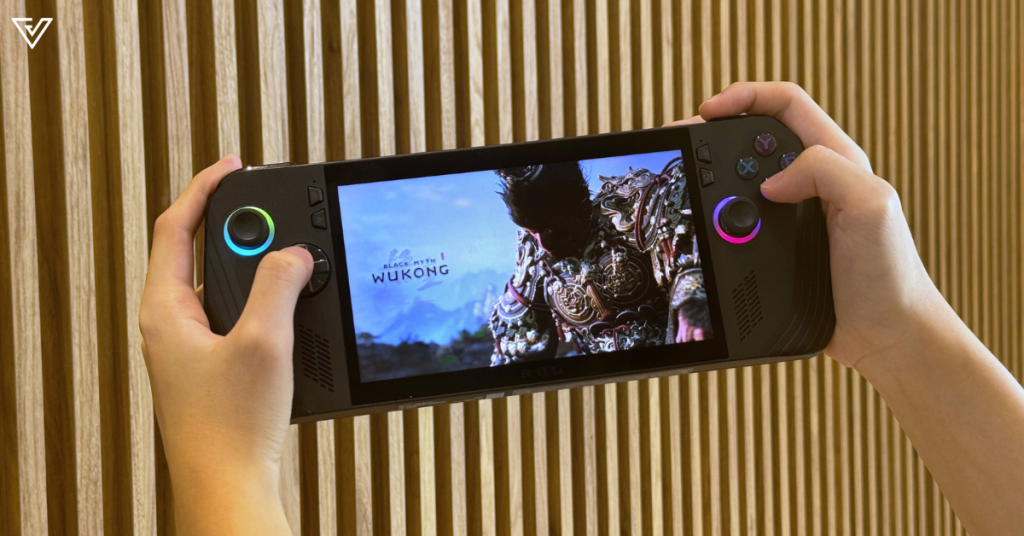
I’ve always been more of a PC gamer (Facebook’s FarmVille was my jam), but growing up, I used to have a handheld gaming console that I loved very much.
It was the foldable baby pink Nintendo 3DS, and it made me feel like the coolest girl ever when I flipped it upon and yanked out the stylus.
But I must say, the NDS has got nothing on the ASUS ROG Ally X.
For the past two weeks, I have been obsessively playing the ROG Ally X, so much so that it might be a health hazard. But that’s not so much the console’s fault than just my own discipline issues. Not to worry, I’ve managed to strike a balance now.

Well, that, and the fact that I will be tearfully parting ways with the device soon.
So, having racked up a worrying number of hours in gametime over the past two weeks, here’s my review of the ROG Ally X.
A major upgrade from its predecessor
Of course, I won’t compare ROG Ally X’s specs with the 32-bit NDS, but rather, its direct predecessor, the ROG Ally, which was the first-ever handheld console ROG released.
There are definitely huge buffs that the Ally X got, with one of the most important ones (at least to me) being the 80Wh battery. That’s double the battery life of the ROG Ally, which had a battery life of 40Wh.
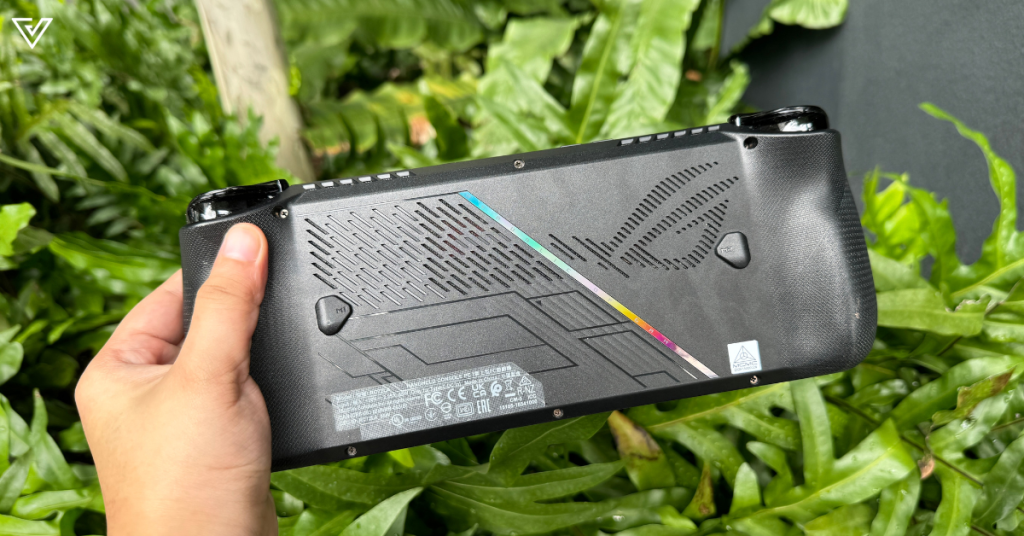
The ROG Ally X now also supports up to 1TB of storage space and a RAM of 24GB. Its joysticks are more than twice as durable, with tighter springs and supporting up to five million cycles. The speakers are louder, there’s an additional USB-C port, and the fan is stronger. Basically, everything is bigger and better.
Compared to other handheld gaming consoles on the market (like the Steam Deck and Nintendo Switch), the ROG Ally X is pretty darn impressive as well. At least, that seems to be the case on paper. Does the ROG Ally X actually live up to high expectations?
Intuitive and powerful performance
Despite my measly experience with gaming consoles, the ROG Ally X was quite intuitive. Yes, there was a slight bit of a learning curve in the beginning, but just one gaming session in, I was already quite familiar with the layout.
You might think, though, wouldn’t my obsession be with the game itself, and not the console? Well, just to give a bit of context, the biggest barrier between me and gaming is the time and effort it takes to boot up my laptop and subsequently the game (and the fact that my laptop kind of sucks).
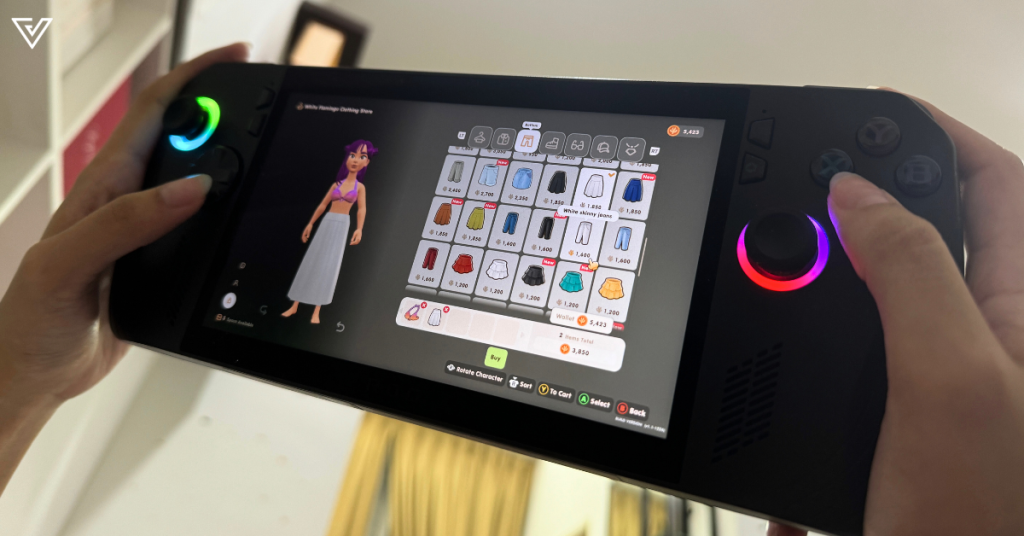
With the ROG Ally X, though, the inertia to just go home and start gaming is so little. In fact, I can (and have) played on the train. It’s that easy and portable.
Aside from playing my favourite farming simulator, I also booted up Black Myth: Wukong (shout out to my cousin for the loan). I don’t often play action RPGs because, well, skill and equipment issues, but playing it on the ROG Ally X was so fun.
Now, it definitely doesn’t play as well as a powerful PC setup, but the performance was rather smooth, though there were some dropped frames during cut scenes. Admittedly, the rendering of the graphics left a little to be desired, especially when it comes to all that fur and hair on the characters.
Aside from that, I loved the vibrant colours, but I do think the peak brightness (500 nits) could go up further, especially as I sometimes find myself gaming outdoors. This has something to do with the fact that the display isn’t OLED, but rather just an LCD screen.
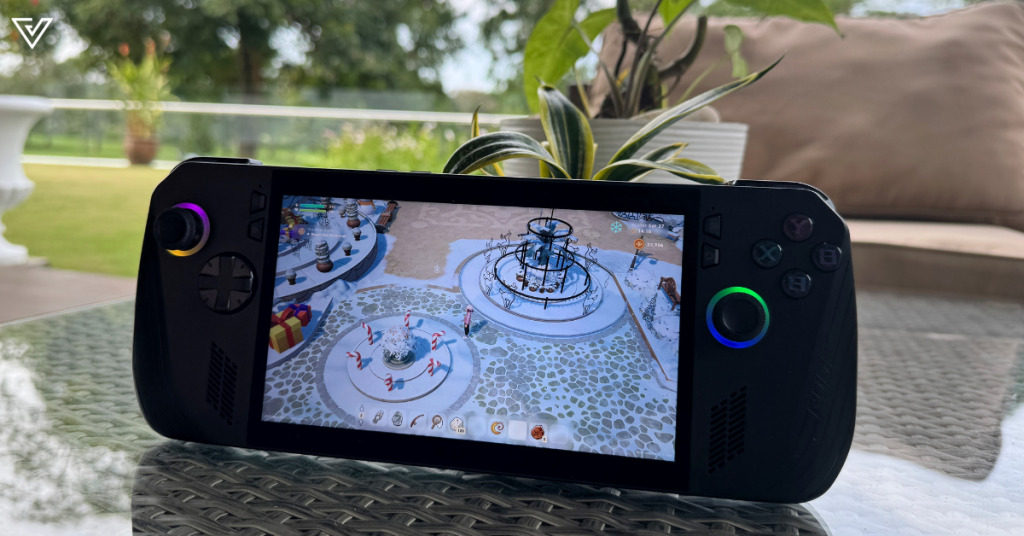
On the other hand, the speakers were loud and full, allowing for maximum immersion even without headphones.
I’m definitely grateful for the battery upgrade because it felt like it was draining so much. But then again, that was because I was playing it for hours on end, so what did I expect?
With that, the console also got quite warm at some point, but never unbearably so. It was easy to toggle between performance modes, so upping the fan speed only took a couple of taps.
The verdict
As you can tell, I really loved my time with the ROG Ally X, so much so that I really am considering whether to purchase it myself.
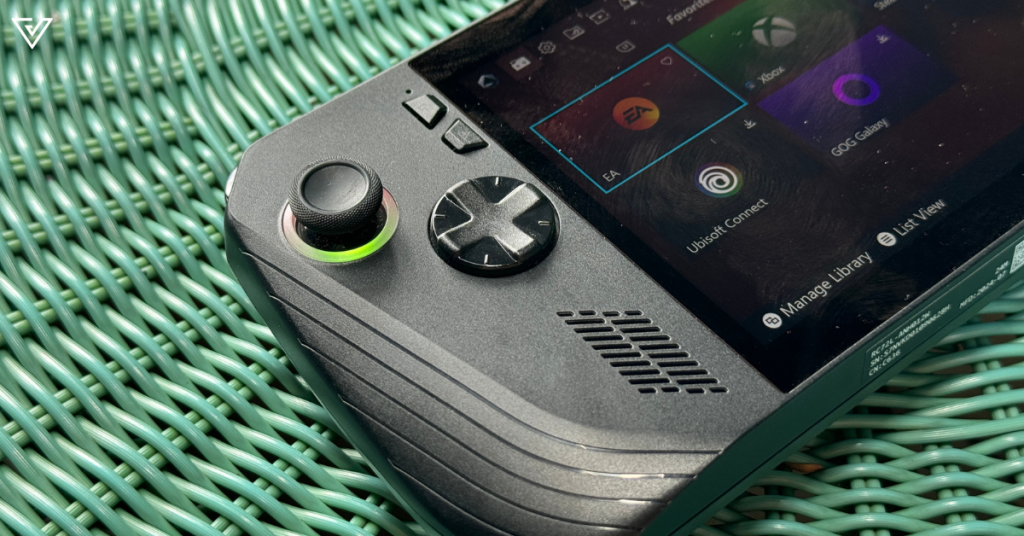
The biggest obstacle standing between me and my desire to own an ROG Ally X for myself, I would say, is the hefty price tag of RM4,299.
In a vacuum, it’s definitely a great console. But stacking it against the affordability of the Steam Deck, it might not hold up as strongly. Then again, the Steam Deck isn’t officially launched in Malaysia yet, though you can get it for around RM2,000 from sellers locally.
It boils down to what you want to play and how you play. If you enjoy playing heavy, high-performance games on the go, I don’t think you’d find anything more perfect than the ROG Ally X.
All I can say is that the ROG Ally X made gaming easy and fun for me. And, really, what more could you ask for from a gaming console?
| Pros | Cons |
|---|---|
| Powerful performance for a handheld gaming console, with improvements across the board specs-wise | Expensive price point |
| Incredible battery life to supports hours of heavy gaming | The LCD display’s peak brightness is on the lower end compared to some other handheld consoles |
VP Verdict is a series where we personally try and test out products, services, fads, and apps. Want to suggest something else for us to try? Leave a comment here or send the suggestion to our Facebook page.
Also Read: 5 scenarios in which you would appreciate having the reliable ASUS Vivobook 16 for work